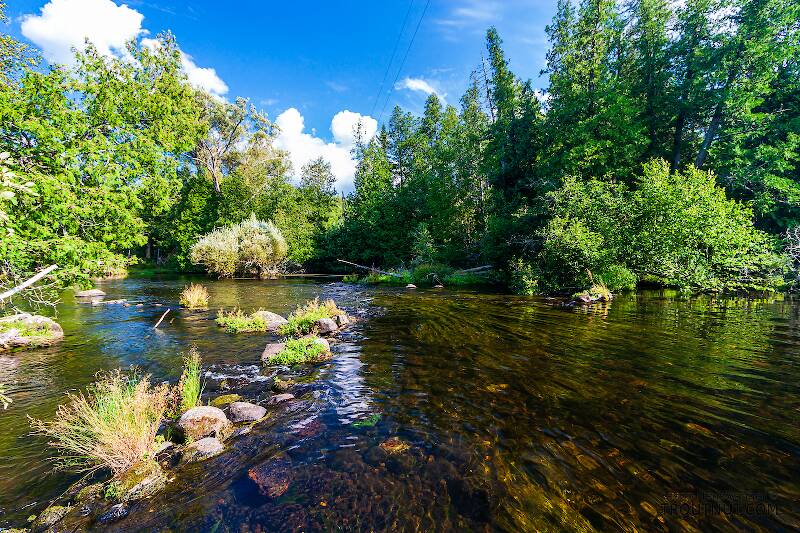
Hex Mayflies
Hexagenia limbata
The famous nocturnal Hex hatch of the Midwest (and a few other lucky locations) stirs to the surface mythically large brown trout that only touch streamers for the rest of the year.


Stonefly Species Sweltsa oregonensis (Sallflies)
Species Range
Physical description
Most physical descriptions on Troutnut are direct or slightly edited quotes from the original scientific sources describing or updating the species, although there may be errors in copying them to this website. Such descriptions aren't always definitive, because species often turn out to be more variable than the original describers observed. In some cases, only a single specimen was described! However, they are useful starting points.
Description from GBIFthe Global Biodiversity Information Facility
Source: A Scanning Electron Microscopy Study Of The Epiprocts Of Western North American Sweltsa (Plecoptera: Chloroperlidae)
Male epiproct. Dorsal length ca. 505 - 510 µm, basal width ca. 395 - 409 µm, width at subapical constriction point ca. 256 - 263 µm. Somewhat spatulate in shape, broad at base (Figs. 1 - 2), dorsoventrally flattened, with slightly depressed concavity on dorsal surface, constricted beyond midlength, and usually broadly rounded or upturned at tip. Dorsal surface, except for narrow rim, bearing dense pile of short, setae (Figs. 3 - 4); setae appear comb-like with several filaments arising in a common grouping; ventral surface glabrous, at least near tip. Dorsal process. Located on tergum 9. Total width ca. 300 - 341 µm, median notch ca. 88 - 93 µm wide. Process bilobed, lateral lobes truncate to slightly rounded, each ca. 105 - 124 µm wide, extending above a median U-shaped notch. Dorsal surface smooth on anterior margin but eroded posteriorly (Figs. 5 - 6).
Start a Discussion of Sweltsa oregonensis
Stonefly Species Sweltsa oregonensis (Sallflies)
Species Range
Common Names
Resources
- NatureServe
- Integrated Taxonomic Information System
- Global Biodiversity Information Facility
- Described by Frison, T.H. (1935) New North American species of the genus Alloperla (Plecoptera: Chloroperlidae). Transactions of the American Entomological Society 61, 331–344 + Pl. XI-XIV.

